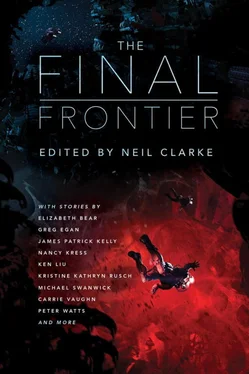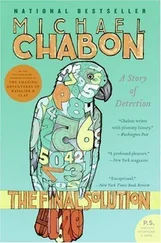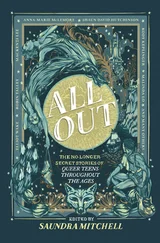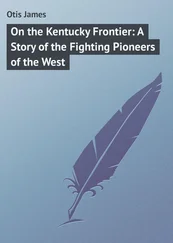When she was done with the ice-drilling probe, she went through several airlocks to the habitation deck. It was tiny, but sufficient enough for hers and Dimitri’s needs.
“It seems we have a word from the outside world,” her husband smiled as she entered the cabin. “Kittiwake just picked it up.”
After checking the signal for malware, the ship automatically showed them the recording. The face of their superior, OSS Mission Supervisor Ronald Blythe, appeared on the screen. He congratulated them for their results on Triton and mentioned that a window for another long-term scientific expedition was opening. Theodora’s stomach rocked. She was eager to find out. But still… a new expedition would mean yet more years away from the rest of humanity. The company picked her and Dimitri because they were a stable, non-conflict couple with steady personalities and a lot of technical and scientific experience. They were supposed to be able to spend years without any other human contact in a tiny space of their ship, exploring the outer solar system, without a chance for a vacation, without feeling the Earth’s gravity, smells, “wind… However, we had a contract for eight years. The time’s almost up. Are they proposing to prolong it? And what for? thought Theodora.
“Last week, we received a signal from Nerivik 2.”
“Isn’t it the probe sent to Sedna in the eighties that stopped transmitting before it reached an orbit?” murmured Theodora.
It was. Blythe went on explaining how they lost contact with the probe for more than ten years and suddenly, out of thin air, it sent out a signal five days ago. Scientists at the FAST observatory who picked up the signal by accident were a bit surprised, to put it mildly. They began analyzing it immediately—and fortunately didn’t keep intercepting the transmission for themselves.
“And the findings were… weird. It became clear that the probe lost its orbit, crashed, but probably regained control of its thrusters shortly before the crash and tried to change the collision into a landing. It was just damaged. It’s possible that it kept transmitting most of the time, but without aiming the signal, the probability of reaching any receivers in the system was very low. However, it probably had time to send down its two landers before the crash. They kept measuring all they were supposed to record—and among other tasks, they tried mapping the ice layer. That’s where it became really strange.”
Theodora listened avidly as Blythe started explaining. Her interest grew every second.
The ultrasonic pulses showed an intriguing structure some two hundred meters below surface. It could not be told how large it was, but it had at least one hundred meters in diameter; maybe a lot more. The signature seemed like metal.
Blythe included the data in the transmission so that Theodora was able to look at it while he was speaking. It really was strange. It could have been a part of a metal-rich rock layer. But what would it be doing on Sedna? The dwarf planet was supposed to have a thick largely icy layer composed mostly of methane, nitrogen, ethane, methanol, tholins and water ice. Nothing even remotely like this . Maybe a big metal-rich meteorite buried in the ice crust after an impact then?
“We don’t know what it is, or even if the measurement was correct. But it surely is interesting. It would be desirable to send a manned mission there. This looks like a situation that needs more resourcefulness and improvisations than robots can do,” continued Blythe.
And for this, they needed someone with an expertise of frozen bodies of the outer solar system; someone stable, resourceful and determined; and of course, preferably someone whom the journey would take around five instead of ten years. Sedna was still quite near its perihelion, but growing away slowly every year. In short: They needed someone like two experienced workers closing their successful mission on Neptune’s icy moon Triton.
“…of course, I cannot force you into this. But with prolonging the contract, you’ll receive extra money for such a long stay on your own and all the associated risks. I attach the new version of your contract to this message. I expect your answer in three days.”
Theodora didn’t have to look at the document to know the bonuses would be large; almost unimaginably large. There were medical risks associated with long-term radiation exposure, dangerous activities, immense psychical pressure, stay in microgravitation and above all, the cryosleep necessary to travel so far away without losing many years just by the voyage itself.
But it wasn’t the money that primarily tempted her to accept the contract.
Theodora and Dimitri looked at each other expectantly. “Well,” she broke the silence first, “looks like we’re gonna take a rather long nap; do you agree?”
Theodora shivered. At the first moment, she felt exposed and frightened without any obvious reason, which was even worse. Then she remembered; she was in the cryosleep chamber and slowly awakening. They must be near Sedna now.
“Dimi?” she croaked. There was no reply, although the ship was supposed to transmit every conversation to the other chamber—which meant that Dimitri hadn’t achieved consciousness yet.
It took Theodora another hour before she could gather her thoughts well enough to start going through the data. When she was in the middle of checking their velocity and trajectory, the speaker in the chamber came alive: “Darling? Are you awake?”
“Yes, how are you?”
“Well, nothing’s better than a good long sleep!”
Theodora laughed. Her throat burned and she still felt a bit stiff, but she couldn’t stop. They actually were there; further than any human beings ever before!
In the next couple of days, Dimitri and Theodora had little time to rest although they didn’t do anything physically demanding and were still recovering from the cryosleep. First they searched for and found the Nerivik 2 crash site and the two nearby stationed landers. The ice in the area seemed different from other sites, as if it had been gradually modified by inner volcanic activity. That explained why Nerivik 2 sent both its landers there in the first place. Kittiwake sent down a probe, continued mapping the surface and after that sent a few other probes on different locations. It was a standard procedure, but it needed a lot of time.
When the first results from the probe near Nerivik 2 arrived, Dimitri sat still for a moment and then found his voice and called: “Dora! You must come see this.”
The readings were peculiar. The object buried almost two hundred meters below the surface seemed a bit like an asteroid now, more than a hundred meters in diameter in one direction and over five hundred in the other. According to the ultrasonic pulses data, its shape seemed conical and the layer reflecting the pulses quite smooth. A very unusual asteroid indeed.
“What do you think it is?”
Theodora shrugged. “Don’t know—and can’t very well imagine, to be precise. Until it’s proven otherwise, I’m betting on an asteroid, albeit a weird one. But let’s find out soon.”
“I’ll send down the drilling machinery, shall I? Or do you propose to wait for even more readings?”
“Send it.”
Kittiwake had two major drilling devices—three before Triton—and one backup machine. Theodora and Dimitri decided to send two at once. It was riskier, but they wanted to compare the data from an area with the anomaly and from another place chosen because of its similar surface structures. The equipment was old but reliable and lived through many more or less improvisational repairs.
At the end of the first day of drilling, they reached almost thirty meters below surface. On day three, they were about one hundred meters deep. On day four, the probe got through almost one hundred and fifty meters of ice and stopped.
Читать дальше












